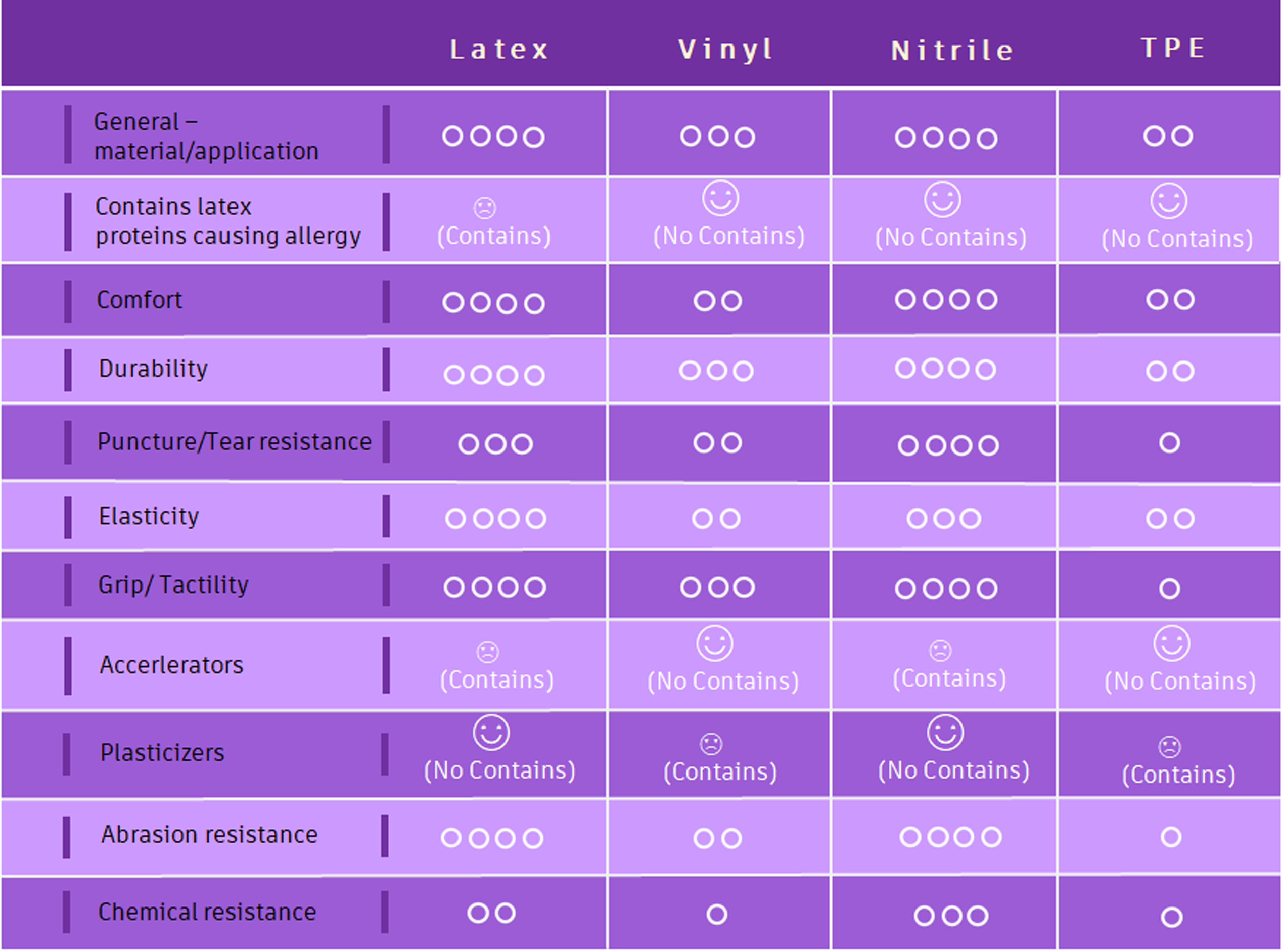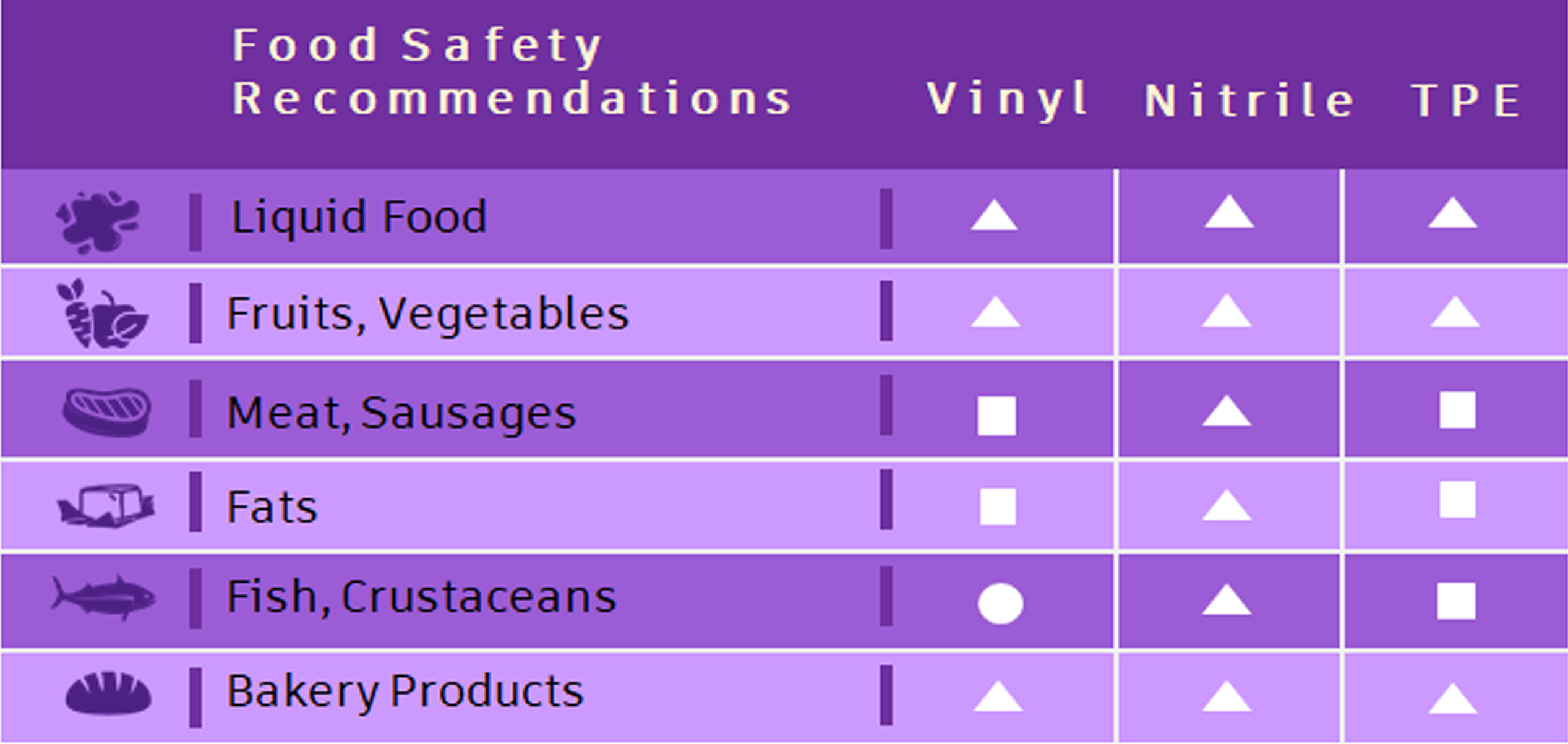Knowledge Center
For intricate work,one would need gloves with good fit, flexibility, and maneuverability. For work that does not require delicate finger movements, thicker gloves can be used.
People who wear gloves for shorter durations can choose gloves with a better price-performance ratio and tactile sensitivity. On the contrary, for those who weat gloves for longer usage durations can choose gloves with better protection, durability, and tear-resistance.
In order to avoid any type of reaction between the gloves and the encountered chemical substances (such as strong acid and strong alkalis) one must first determine whether the substances that the gloves come in contact with have any unique chemical properties or special precautions.
High-quality disposable gloves must comply with rigorous production processes when combining various chemical substances. Furthermore they must undergo stringent quality control procedures before they can be sold on the market. Remember to select your glove suppliers that comply with both domestic and international standards. Don’t let something that is supposed to protect you endanger the health of your hands and the safety of your products.

Comparison Table of Materials That can be Contacted with Food


not suitable/not recommended

conditionally suitable/ can be used for short partial contact

suitable for full contact and longer work with the respective food
Copyright © Superieur. All rights reserved.
